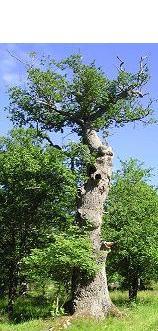Tree and site quality preferences of six epiphytic lichens growing on oaks in south eastern Sweden

Abstract
Oaks (Quercus robur) can reach considerable age which makes them an important substrate for many epiphytic lichens, including several red-listed species. In this study the importance of tree size and other environmental factors on the occurrence and abundance of six epiphytic lichens were investigated at two sites, in south eastern Sweden, differing in quality as judged by tree size distribution. All oaks within a predetermined area at each site were surveyed and the effects of tree circumference, light condition, trunk inclination and site were analysed. The results showed that different species responded differently to the environmental factors, but, overall, tree size seemed to be the most important factor for occurrence and abundance, where only one species had no clear relationship. For the remaining five species the probability of occurrence and abundance showed significant relationships, one negative and four positive, to increasing tree size. For two species, site quality was important and the probability of finding the lichens on smaller trees increased at the high-quality site. This indicates that larger dispersal propagule loads and shorter dispersal distances could increase the colonisation probability. Eliminating possible confounding effects of spatial patterns within the sites had only minor effects on the result. This study highlights the importance of long-term management plans that consider the age structure within stands to contain trees of different sizes so that a certain number of old trees, which are needed for survival of the most demanding lichen species, are maintained.
Responsible for this page:
Director of undergraduate studies Biology
Last updated:
05/17/07
